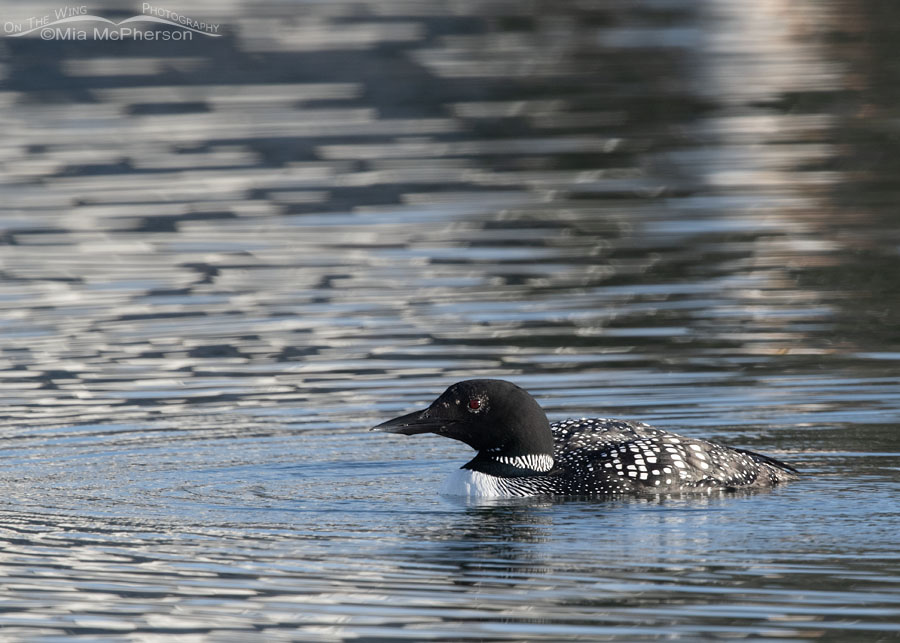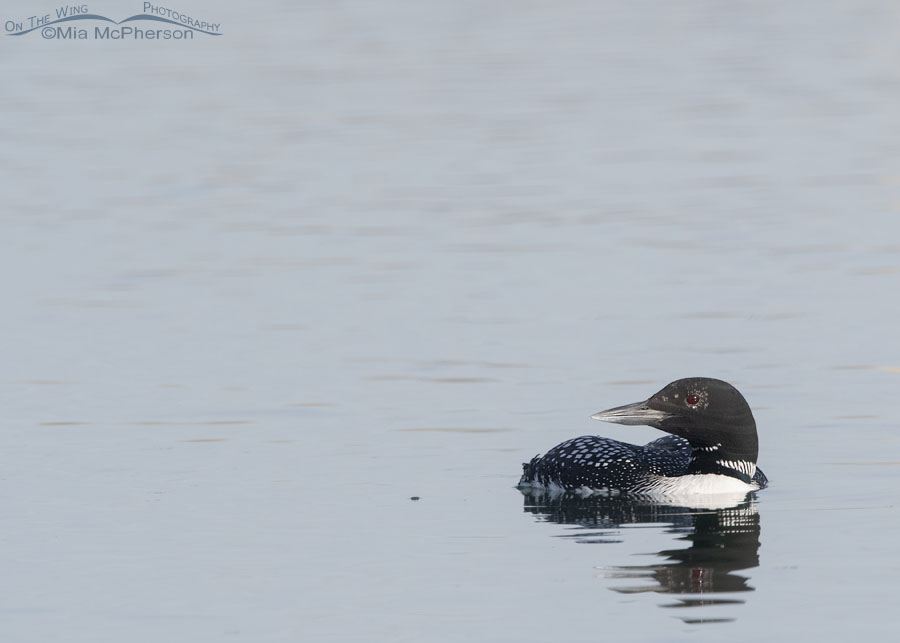It has been a year since I was surprised and delighted to be able to take tons of Common Loon photos at a pond close to where I live in Salt Lake County.
 Adult Common Loon on spring migration – Nikon D500, tripod mounted, f7.1, 1/1000, ISO 500, Nikkor 500mm VR with 1.4x TC, natural light
Adult Common Loon on spring migration – Nikon D500, tripod mounted, f7.1, 1/1000, ISO 500, Nikkor 500mm VR with 1.4x TC, natural light
I was surprised because typically, this loon species is seen in high mountain lakes and reservoirs in Utah during the spring, not down in the valley. But that winter was particularly snowy and cold, so most of the lakes and reservoirs in the high country were still frozen over when the loons were migrating. At least, that is my own personal theory.
My delight was that the loons were close to home, and on the pond, close to wherever I stood with my camera gear. I had a bird’s eye view of these loons most of the time.
This particular loon stayed at the pond for a couple of days, eating, resting, and preening before moving on. A few more loons came to the pond several days later.
 Common Loon stopping over on spring migration – Nikon D500, tripod mounted, f7.1, 1/1600, ISO 500, +1.0 EV, Nikkor 500mm VR with 1.4x TC, natural light
Common Loon stopping over on spring migration – Nikon D500, tripod mounted, f7.1, 1/1600, ISO 500, +1.0 EV, Nikkor 500mm VR with 1.4x TC, natural light
I could tell the loons apart because this individual loon wasn’t quite in full breeding plumage, whereas the other loons that stopped over at the pond were when they arrived.
The urge to migrate in these loons and other migratory birds is strong. The loons wouldn’t have known that the reservoirs and lakes in the high country weren’t ice-free, but they made the journey anyway. When met with ice at those locations, the Common Loons dropped down to lower elevations to feed and refuel before they continued their migration.
They are smart birds. I admire their ability to move forward on migration despite not knowing where their journeys might take them or what conditions they might find.
Life is good.
Mia
Click here to see more of my Common Loon photos plus facts and information about this species.


Bird brained as a description of those without much sense is sooooo wrong. These are gorgeous shots. Thank you.
It was a spectacular time! I have never been able to be so close and spend so much time watching and photographing common loons. It was also very fun to share the excitement with you. Not many understand.
Love loons…haunting and beautiful.